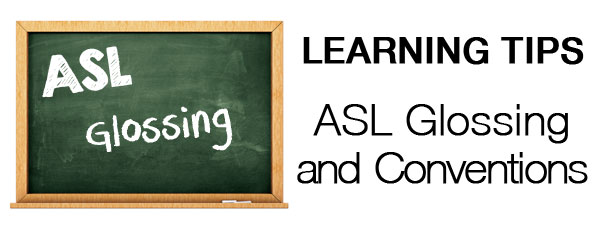
ASL glossing and conventions
Since ASL is a visual-gestural language, not a spoken consecutive language, it can only truly be recorded in video and not captured in writing. Many writing systems have been developed for ASL, but none of them have reached a critical mass, probably because it is difficult to capture handshape, location, palm orientation, movement and non-manual signals in a written word. For that reason, when scribing ASL, many people rely on the linguistic convention called "glossing," which means writing a word in your native language for each sign that appears. This is not a perfect system, but it can be useful when discussing the syntax of other languages, signed or spoken.
Signing Terminology
Glossing - Writing a word in your native language for each sign that appears. ASL is not a writen language, so glossing is not a translation, but a description of what was signed, including signs used, important body language, and accepted glossing symbols.
When writing an English gloss for an ASL sentence, conventions are followed.
Here are a few glossing conventions that are commonly used:
- Signs are capitalized, such as BOY, HOUSE, ME
- Words that are fingerspelled have dashes written between the letters, such as M-A-R-Y, D-O-G, S-A-L-E
- Classifiers are written as CL: handshape, such as CL:3 (vehicle), CL: 55 (feet), CL: CC (telephone pole)
Signing Terminology
Classifiers - A classifier is a combination of a classifier handshape and movement root that are made to reference whole phrases with a single sign. First a signer will sign the subject, then they can use a classifier to describe something about that subject - what it looks like, where it is, how it moves or behaves.
These are not all of the conventions, these are only a few. What other ASL conventions do you know? Share them in the comments below.
ADVERTISEMENTS
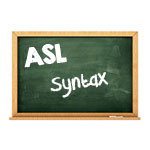 ASL Syntax
ASL Syntax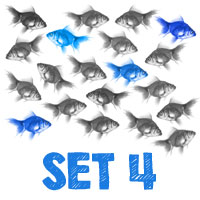 Signs That Are Close... But Not the Same - Set 4
Signs That Are Close... But Not the Same - Set 4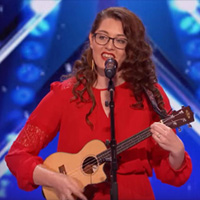 Living Loud: Mandy Harvey – Singer, Ambassador, and Author
Living Loud: Mandy Harvey – Singer, Ambassador, and Author

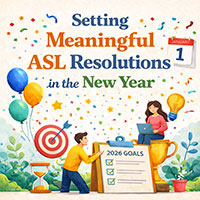


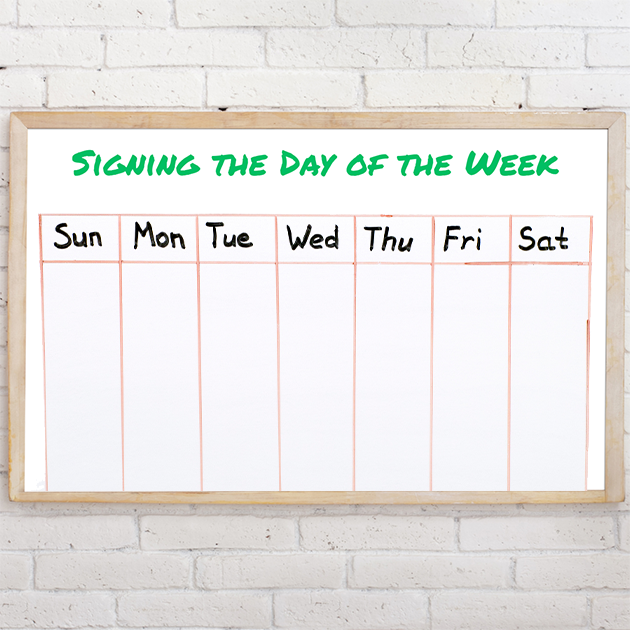


TuckerFriday, May 16, 2014
Is there a comprehensive list or manual of conventions and glossing available anywhere?